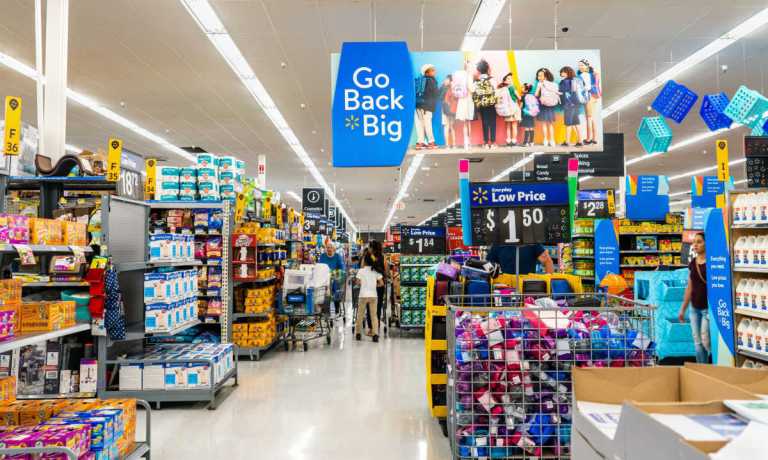Amazon vs Walmart Weekly: Bring on the Season of Deals

When Walmart CEO Doug McMillon told investors “we’re building a different business” this week, the part he left off was that the business is going to look a lot more like its arch-rival Amazon.
This is not to say that the exact same thing isn’t true on the part of the eCommerce leader, which itself is aggressively moving to add more physical locations and sell more groceries via the Walmart model.
What it does reflect, however, is a growing reality that the more the top two retail players try to differentiate themselves, the more they’re starting to look the same, especially now when the primary focus for both — as well as a growing number of their retail rivals — is finding the best way to connect with consumers who are nervous and stressed and shopping in ways they never have before.
“From Halloween to Christmas to Flipkart’s ‘Big Billion Days,’ we’ll be ready,” McMillion said Tuesday (Aug. 16). “We expect inflation to continue to influence the choices that families make and we’re adjusting to that reality so we can help them more,” he added, saying that Walmart would have a “cleaner inventory position” and “strong seasonal presence” for the coming busy season.
While Walmart also said its “everyday low price” mission and the present inflationary environment had enabled it to win market share and gain ground with both middle- and higher-income households, it’s a running question whether or not it will be able to retain those new customers once inflation comes back down.
Although the food and beverage category has been a focal point for years and Walmart still enjoys more than a 10-to-1 lead in grocery sales over Amazon, new data and challengers are further complicating that fight.
This, as new PYMNTS data this week showed 3 in 5 consumers have cut back on nonessential grocery spending while legacy grocery stores and non-traditional players such as Target are also actively and aggressively sharpening their offers to win the same beleaguered consumer.
In fact, Target CEO Brian Cornell pointed out this week during the retailer’s own earnings report that, thanks to the recent consumer shift toward essentials over discretionary purchases, its grocery business had grown 50% over the past three years, marking an increase of nearly $2 billion in additional grocery sales.
Of course, the price war is not limited to groceries, and will see the two retailers, as well as other mass merchants such as Kohl’s, making sharp price reductions in virtually all categories to make sure they’re not stuck with piles of unsold inventory come January.
It’s worth noting that this promotional change is the exact opposite of the holiday selling season a year ago, where supply chain concerns dominated the dialogue and caused retailers and consumers to begin their Christmas shopping in October so as not to be left short and empty-handed for the big day.
The Digital Dogfight
In addition to the coming price war, another brewing battleground between Walmart and Amazon in the news this week is their growing efforts to sweeten their membership offers by adding more goodies into the bundle that comes with an annual subscription.
While Amazon Prime, with over 200 million subscribers, is still estimated to be at least four times as large as Walmart+, the latter’s move this week to tie-up with Paramount studios will see its members getting a sweeter media deal starting next month for no extra cost.
Amazon, of course, recently juiced its own membership bundle with the addition of free Grubhub delivery for a year and is now reportedly testing out a TikTok-style service to give its social and streamed media selling efforts a lift.
For all PYMNTS retail coverage, subscribe to the daily Retail Newsletter.